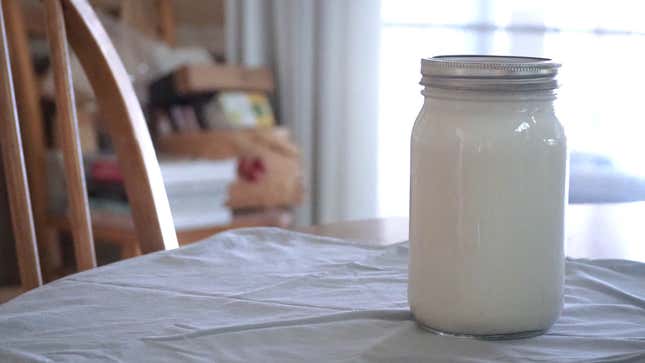
When I switched from vegetarianism to veganism three years ago, one of the first things I noticed was the diversity of the alternative milk section at my local grocery store in Sacramento. Aside from the standard soy and almond milks, the shelves were stocked with all sorts of offbeat options like macadamia, hazelnut, hemp, and even pea milk. I spent a lot of time and money trying to figure out which one tasted best.
Hemp milk was a little bit creamier than the others, but it had a grainy greenish color to it that wasn’t particularly appealing. Oat milk varied widely between brands. Soy and almond both got the job done, but the slightly artificial flavor of each was a constant reminder that I was drinking a heavily processed simulation of cow’s milk. Ultimately, the differences were minimal, and it didn’t make much difference which one I bought, as long as it was relatively budget-friendly (pea milk, for example, never became a staple in my dorm room refrigerator).
As it turned out, my favorite non-dairy milk didn’t come from the grocery store—it came straight from the hand-me-down Magic Bullet gathering dust in my college apartment.
In the first year or so of going vegan, I didn’t even really think to try making my own milks. I’d seen vegan food bloggers make them before, but they always made it sound like such a hassle, involving all sorts of fancy equipment, like expensive high-speed blenders or nylon “nut milk bags” that I could never, for the life of me, find at the store. But as I’ve since found out, none of that’s necessary to make a plant-based milk that tops all the other options: the best, freshest-tasting alternative milk can be made in the most mediocre of blenders, as long as you’ve got a handful of raw cashews and running tap water.
I first started testing out cashew-based dairy alternatives when a family member gave me a copy of Isa Chandra Moskowitz’s super-comprehensive vegan cookbook Isa Does It, which uses soaked cashews as the predominant dairy substitute. Raw cashews soaked overnight take on a rich, velvety consistency that is key in preparing plant-based versions of dairy-based products such as sour cream, alfredo sauce, and cheesecake. They’re far creamier than almonds and oats, which tend to leave large chunks of sediment that can be difficult to strain out without nylon bags. And unlike soybeans and coconut, they have a fairly neutral flavor that won’t affect the final product. After a couple hours of soaking, the cashews become so soft that even the most mangled and antiquated of blenders can easily pulverize them into a fine consistency, leaving little, if any, sediment. Homemade cashew milk has a silky smooth texture and an inoffensive flavor profile that works well in coffee, cereal, and even vegan milkshakes.

Though Moskowitz’s book doesn’t have a recipe for cashew milk specifically, it does frequently call for readers to prepare cashew cream—and what’s cream but a thicker, fattier version of milk? Her cashew cream technique calls for blending one part raw, soaked cashews with one or two parts water or stock. Instead of the 1:2 ratio of cashews to liquid that Moskowitz calls for, I decided to use a 1:4 ratio to more closely resemble the viscosity of regular skim milk. The result was—and still is—better than any other store-bought milk I’d ever tried, plant-based or otherwise. It tastes rich and sweet, though not overpoweringly so like some of the soy and oat milks I’ve tried.
Poured straight from the blender is when it tastes its freshest. It has a light foam sitting on top, a nice airy touch that you just won’t get from a carton of soy milk. There are no preservatives or gelling agents and there’s no pasteurization process to subdue the crisp and clean flavor—just raw cashews, water, and maybe a touch of maple syrup if there happens to be a bottle in the fridge. Whether it’s swirled into some iced coffee or in a glass on its own, it’s one of my favorite things to drink in the morning alongside breakfast. This is the only alterna-milk I’ll ever need.

Homemade Cashew Milk
Makes about 4 cups
- 1 cup raw cashews
- 4 cups water
- 1 tsp. maple syrup (optional)
- Pinch sea salt (optional)
Soak the cashews in water for at least 2 hours, but preferably overnight. If you’re short on time or just forgot to soak them, you can also boil the cashews for around 10 to 15 minutes, until they’ve noticeably softened up.
Drain and rinse the cashews. Add the cashews, water, and the other ingredients, if using, to a blender and blend on high for 2 minutes. There may still be some small chunks toward the bottom of the blender—if so, give it a stir and blend for another 30 seconds or so.
Straining isn’t necessary, but if you really want to make sure there are no cashew chunks in your milk, you can pour it through a fine-mesh sieve. This keeps for about one week in the fridge.